Reserved For When You Absolutely Positively Had to Get to WestPac ASAP
Fleet Tactical Support Squadron FIVE ZERO (VRC-50) Foo Dogs flew a variety of aircraft between their establishment in 1966 and their disestablishment in 1994. They were redesignated as a Fleet Logistics Support Squadron in 1976. The squadron flew Grumman C-1A Traders and C-2A Greyhounds, North American CT-39 Sabreliners, and Lockheed C-130F Hercules airlifters. But one of the most interesting, and little known, aircraft flown by the Foo Dogs was the Lockheed US-3A Viking Carrier Onboard Delivery (COD) variant.
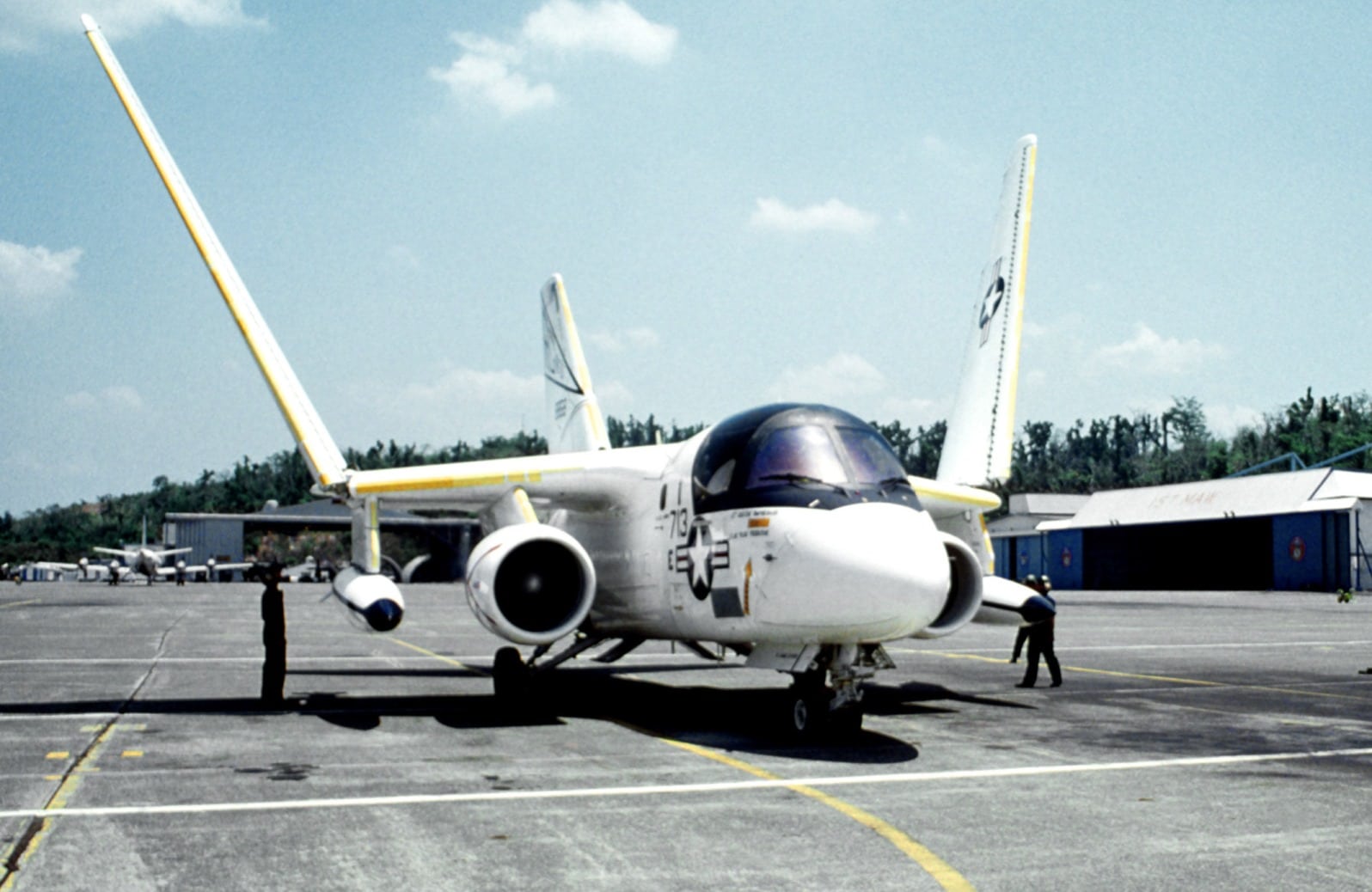
There Can Be Only Six
One reason the US-3A is not exactly a household name is that Lockheed built only six of them. They built a total of 188 S-3 airframes. Most of them were S-3A/S-3B Viking antisubmarine warfare (ASW) jets. Sixteen of those were converted into ES-3A Shadow electronic intelligence (ELINT) variants. But only six US-3A COD variants were built. Five out of the six were converted from early pre-production flight test aircraft. One reason Lockheed was able to do this was the uncommonly smooth development cycle of the Viking. Another reason is that the US-3A was the follow-up to an entirely different Lockheed COD proposal. Well, not entirely…
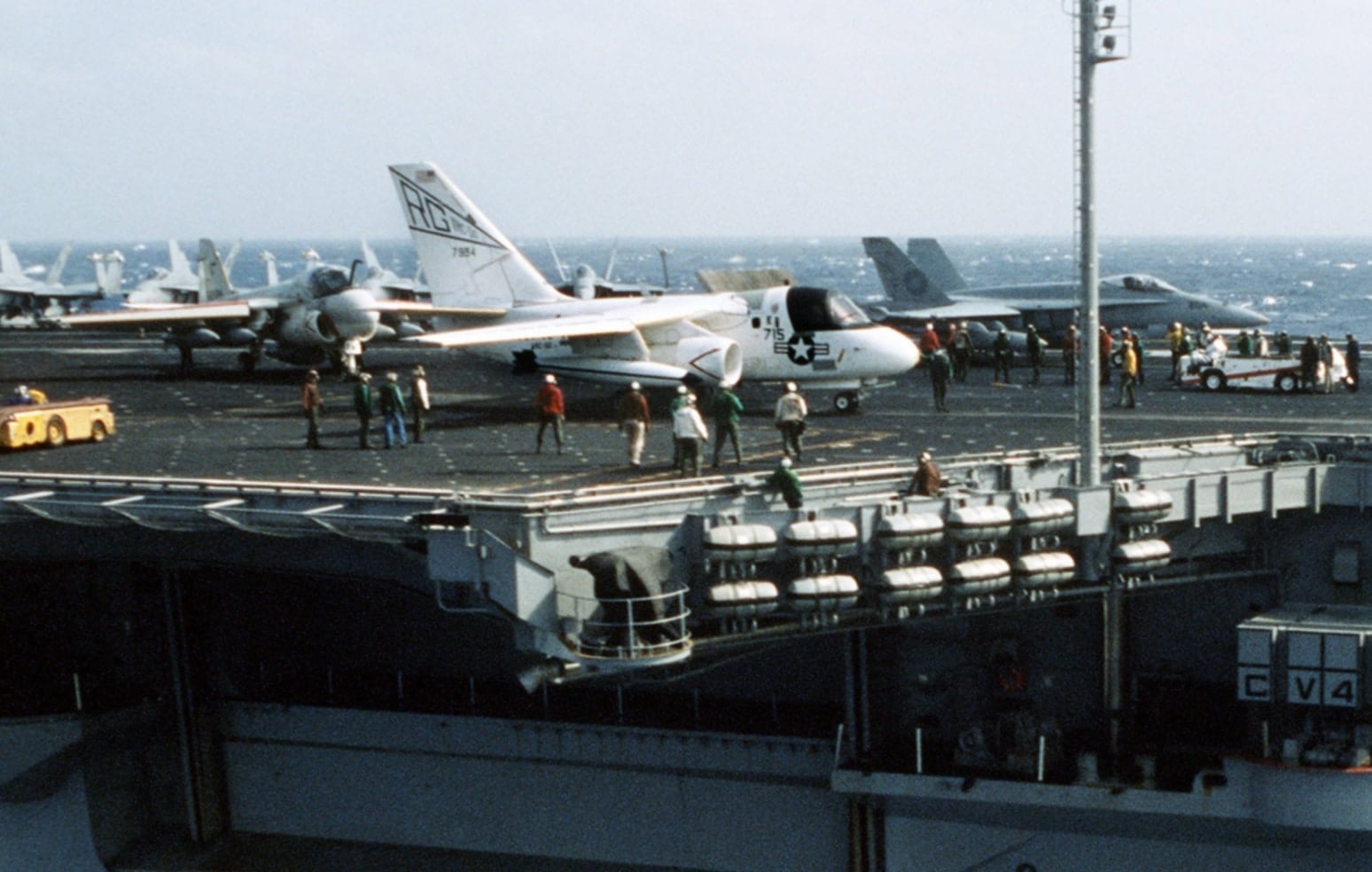
Successful COD Formulas
Lockheed recognized the success Grumman experienced with their C-1A Trader COD aircraft, developed from their S-2 Tracker ASW platform and sharing many of its components but with a modified higher-volume fuselage. The C-2A Greyhound was developed from the E-2 Hawkeye. So Lockheed proposed an offshoot of the Viking sharing some components but with a larger higher capacity fuselage, rear cargo ramp, and uprated engines. The Navy decided to continue with the C-2A as the primary COD solution, but saw the value in a small number of minimally modified Viking CODs. The result: the US-3A- sometimes referred to as Miss Piggy.
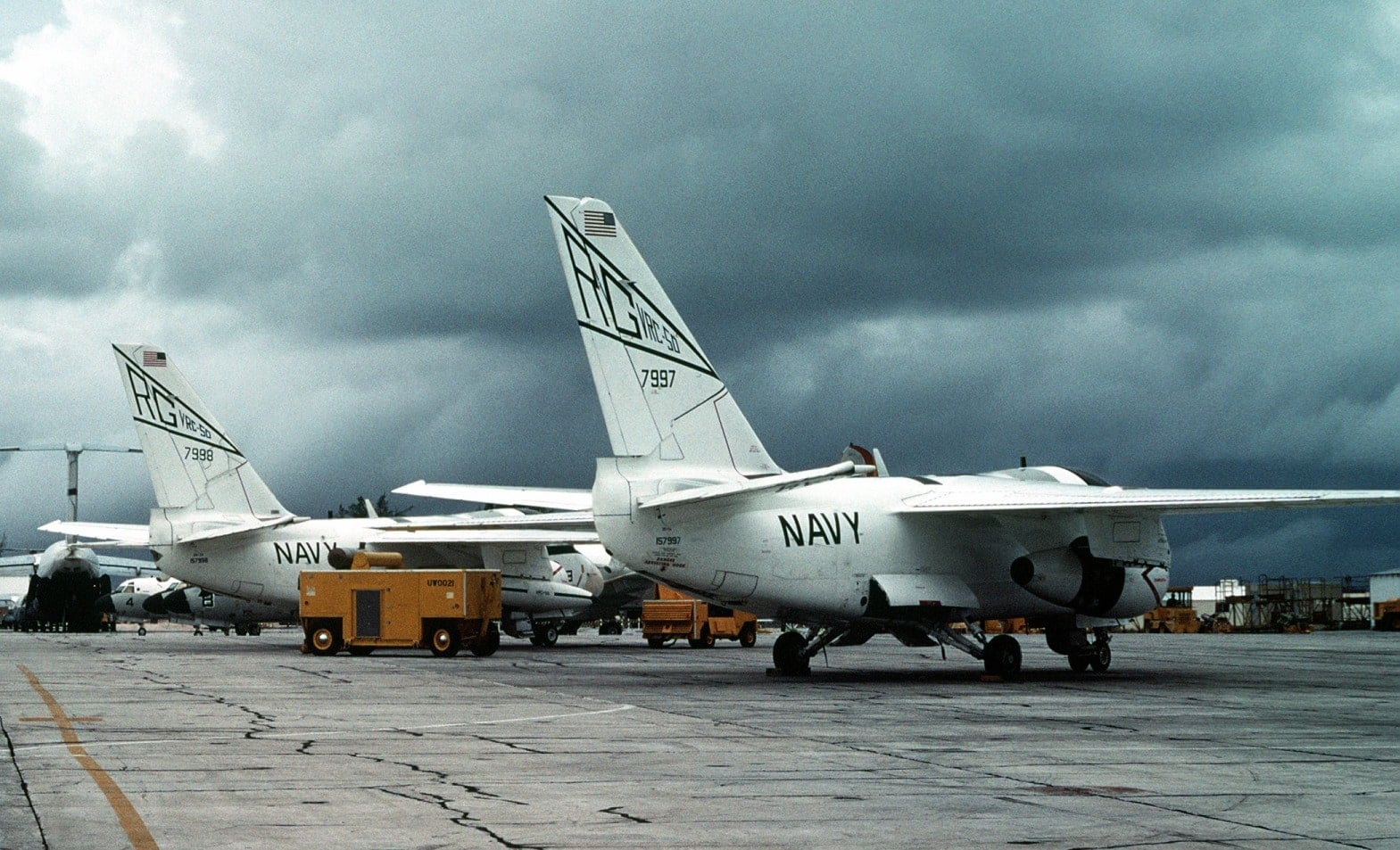
Built for WestPac and Beyond
All of the US-3A CODs served with VRC-50 out of Naval Air Station (NAS) Atsugi in Japan, NAS Cubi Point in the Philippines, Andersen Air Force Base (AFB) on Guam, and their homeport of NAS San Diego when not deployed, which really wasn’t very often. They also frequented places like Diego Garcia in the middle of the Indian Ocean (or near enough, you can see it from there). These aircraft supported aircraft carriers serving in the Western Pacific (WestPac) and points further west- as far as the Gulf during Desert Shield and Desert Storm. They were of course faster than their slightly larger contemporary, the Grumman C-2A Greyhound, but could not haul outsize cargo such as jet engines like the Greyhound (still – at least for now) can.
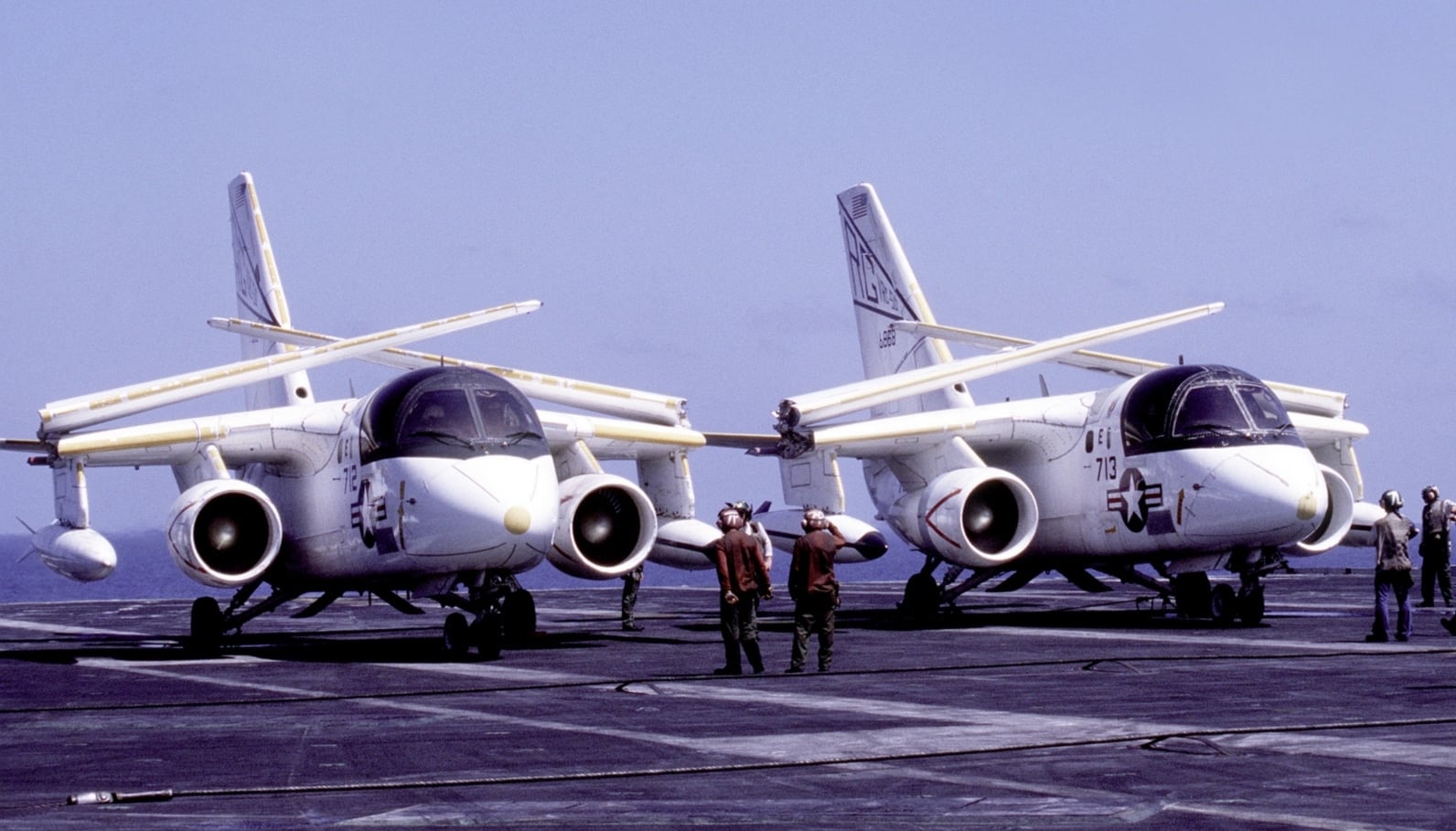
Stripped-Down Heavy Hauler
US-3As were stripped of their ASW mission crew of a tactical coordinator (TACCO) and a sensor operator (SENSO) along with their crew stations and all mission-related equipment carried in the aft fuselage. This left enough room inside the stripped out Viking for six passengers seated on removable/reconfigurable seats and/or up to 4,680 pounds of cargo. Already longer-legged than the Greyhounds, US-3As also retained their ability to refuel in midair – extending their range even more. Unique to the US-3As were the 1/3-width window added to both sides of the forward fuselage. For VIPs who absolutely positively had to get there ASAP and for equally important but size-limited cargo, these white-painted Viking CODs were the way to go.
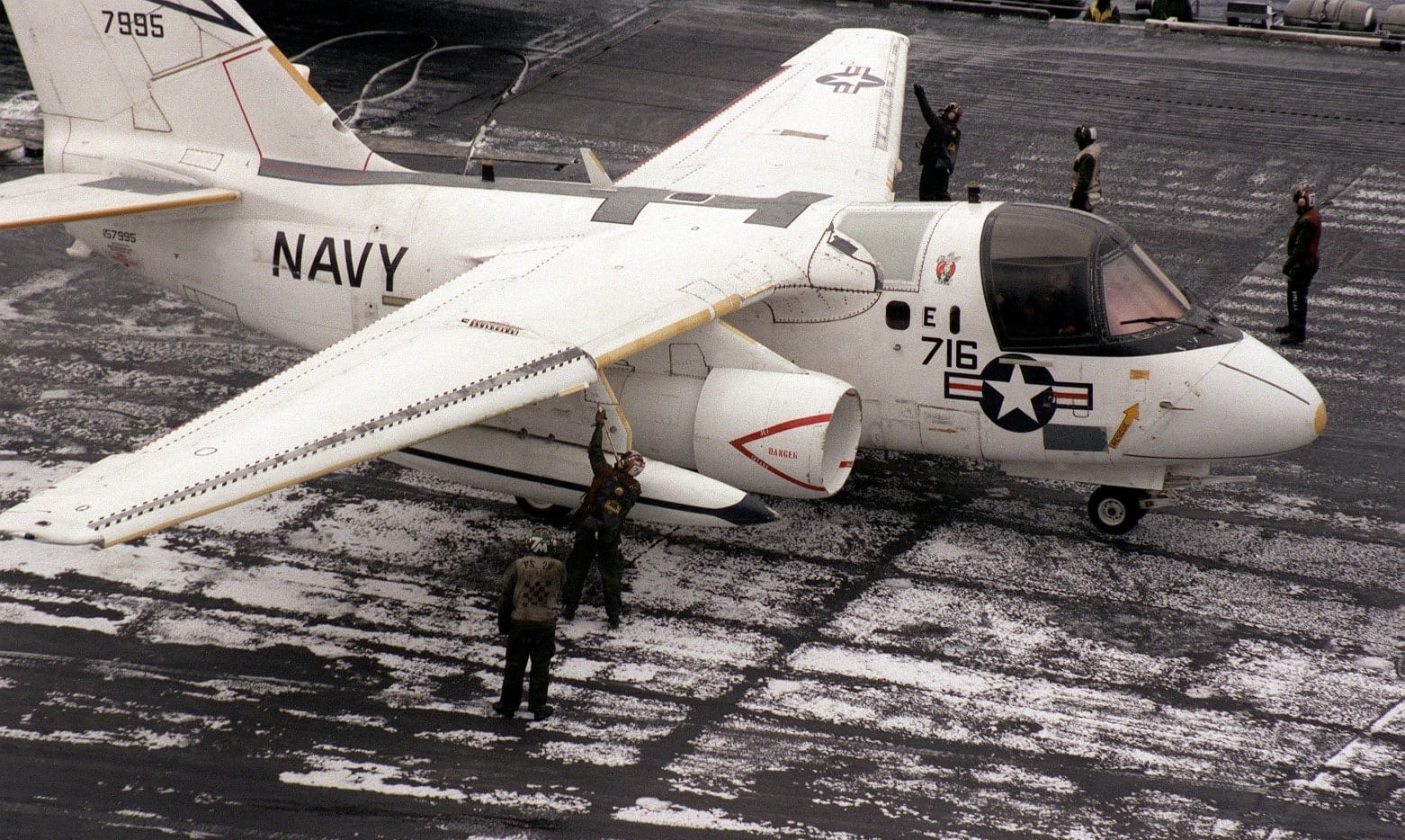
The Blivets That Outlived Their Owners
Even the weapons bays of the US-3As were modified to carry cargo. US-3As also carried specially built cargo pods hung from their underwing pylons. These “blivets” were swapped with drop tanks when range was of paramount importance. After the US-3As were retired, the blivets were sometimes seen hung on fleet S-3A and S-3B Vikings. The US-3A Bureau Numbers (BuNos) were 157994, 157995, 157996, 157997, 157998, and 158868. The pre-production aircraft all served at one time or another with Viking Fleet Replacement Squadron (RAG) VS-41 Shamrocks before conversion to US-3A and many went back to VS-41 after they were retired by VRC-50 during the mid-1990s.

Could Have Been a Whole New Texaco
157998 served briefly with VS-21 Fighting Redtails, VS-31 Topcats, VS-37 Sawbucks, VS-28 Gamblers, and VS-33 Screwbirds configured as a US-3A between 1979 and 1981 before going to VRC-50. 157996 was also the sole KS-3A Viking tanker demonstrator. The jet was configured with a retractable centerline drogue, conformal tanks in the weapons bay, extra-large drop tanks, and plumbing mods. During the late 1970s, the lone KS-3A refueled every Navy jet type equipped with a probe before duty with VRC-50. Unfortunately, 157996 was also the only US-3A loss. On 20 January 1989, 157996 went down at sea while on approach to Subic Bay, taking the lives of the crew of two flying the jet that day.

Languishing in the Desert But Not Ignored
At the time this piece was written there were 92 Viking airframes stored at the 309th Aerospace Maintenance and Regeneration Group (AMARG) at Davis-Monthan AFB in Arizona. The recent announcement that the Navy has (finally) awarded a contract to build aerial refueling drones to extend the range of its short-legged tactical jets makes many wonder why those Vikings, many of which still have plenty of operating life left, haven’t been utilized. I know – it’s an old argument, but any discussion about Vikings is a good discussion. Because War Hoover. And Texaco. And Miss Piggy!


Miss Piggy was a regular at Diego Garcia for high priority cargo for TF-77 in the early 80’s. Mail, newspapers, and personnel. Served as log coordinator for about 4 months and US-3 was an important asset.
Thanx very much for the post. Any interior pics highlighting Miss Piggy’s unique configuration would be greatly appreciated. I was an AW SENSO operator aboard the USS AMERICA with VS-28, CIC-TSC in ’75 & ’76. War Hoover & F-8’s Forever ! ^v^
Bill,
Here is some additional information about the original “Miss Piggy” 157998. Before the US-3As were transferred to VRC-50 at Cubic Point. The Navy routinely transferred “Miss Piggy to the oncoming Westpac Antisubmarine Squadrons as they sailed by Diego Garcia entering the Indian Ocean. During our VS-38 Westpac of 1980 embarked on CV-64, USS Constellation, Miss Piggy” was stationed at Diego Garcia, BIOT. I was one of four VS-38 enlisted member to receive SERE training to become trained to be a US-3A Loadmaster. After receiving OJT from the Senior Loadmaster TDY at Diego Garcia, I then, trained my other three shipmates for their final qualification as Loadmasters. We routinely flew to Gonzo station almost daily, delivering mail, parts, and personnel. It was over seven hours each way to the carrier. I logged over 500 hours and at least 50 traps during my time flying with “Miss Piggy! It was one of the highlight of my Active Duty Navy career! I didn’t complete our nine month deployment due to end of my enlistment in August of 1980. “Miss Piggy” deserved a better faith and I grief that not a single US-3As were saved to document their proud and unique Navy chapter in our Navy Aviation history.
Thank you for the wonderful article and GOD bless you Sir!!!
I was stationed on the USS Midway 82-84.
I remember miss piggy very fondly.
I launched the last C-1 off catapult 2 -we usually deck launched them. Lots of friends worked for VRC50.
NAS San Diego was renamed NAS North Island in 1956, long before the US-3A COD arrived there.